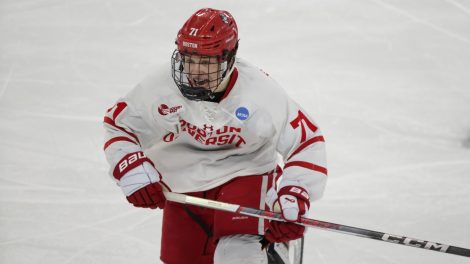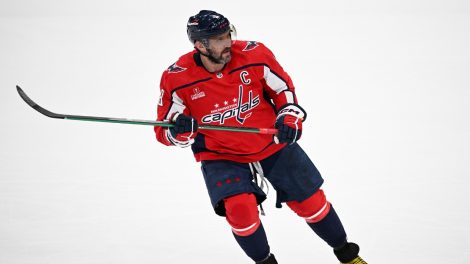The question of whether the NHL should take dramatic steps to increase goal scoring has taken an interesting turn since Mike Babcock called for larger nets last week.
I understand Babcock’s point of view, but let’s put the brakes on larger nets for a second. The NHL has done an admiral job of trying to appease the masses, while not angering the goaltending union.
But let’s call this for what it is: The NHL didn’t go far enough to reduce the size of goaltending equipment when they had the chance last time.
Now, let’s take a look at each piece of equipment, where we’re at with them and where we should aspire to be:
The pads:
Their current height is ridiculous. As a standup goalie myself, the way we used to cheat was to make the pads as wide as possible to reduce the five-hole and provide maximum width coverage.
Some pads got as wide as 15 inches. I won’t mention any names, but I once measured a former goaltending partner’s pads and they were definitely 15 inches across the bottom. With the evolution of the butterfly save to cover the five hole, goalies have essentially done the same thing by making taller pads. When the butterfly closes, the tops of the pads are long enough that the five-hole shuts down completely when goalies drop to their knees.
The NHL went after the width of the pad, and reduced it, but what they should have done is gone after the height. Two-to-three inches maximum above the knee is all you need and this will open up the five hole. Knees would be exposed to pucks, yes, but the knee pads today are more protective than ever, and it’s definitely not an issue.
The blocker and catcher:
Unfortunately there is not a lot of wiggle room here. Other than the so-called “cheater” on the thumb of the glove, reducing the size of these items would run the risk of more injuries. The blocker covers the hand, but if it was flat and didn’t feature the “ramp” at the top, we might see more bad rebounds, and possibly as a result, goals. The ramp keeps pucks from hitting on an upward angle and going in. Flatten the blocker at the top.
The glove has the same ramp on the cuff. It’s not for protection; it’s solely for rebound control and stopping goals. Again, it keeps pucks from hitting on an upward angle and going in the net. The simple solution? Make the cuff flat, and take the cheater off. It should look more like a baseball glove.
The pants:
Now this is an absolute atrocity. Goalies have two sizes they are allowed to wear: large and XL. So a goalie that’s 5-foot-10 has the choice of what he wants to wear. He can wear pants the same size as 6-foot-7 Ben Bishop if he chooses. They are stuffed with padding and unnecessary foams that are solely for rebound control, and to make them larger.
They aren’t form fitting, are wide and are worn as loose as possible for maximum coverage. The league should make them wear form-fitting pants with a spandex-like material allowing maximum movement while reducing the unnecessary fluff and foam.
The chest and arms:
Just as is the case with the pants, there are two sizes a goalie can wear, large and XL. And again, the choice is the goaltenders. They are currently built to be as wide and as soft as possible. They are over-stuffed, over-built and over-protective. Now, I would never want to see someone get hit in the chest and suffer a severe injury. However, you can still protect the chest and heart area and make the equipment around the body and arms more form-fitting.
The stick:
Start by cutting the knob off the top of the stick. Ask any frustrated player and he will tell you this stops more sure goals than anything. Give the goalie a few inches from the paddle to the top of the stick. It should not stick out more than an inch or two above the blocker. This will also open up the top of the net above the blocker. It will also make it more difficult to use a poke-check, tougher to handle the puck, and best of all, we could finally get rid of the silly trapezoid.
The NHL has a chance to do things right this time, without making the nets bigger. Yes the goalies are bigger these days, but so was Ken Dryden in his. There are protective foams, Kevlar and a thin, form-fitting material called carbon fibre that is 30 times stronger than anything we have now.
So good luck, NHL.
I’m happy I’m not fighting this battle. However, before we change the nets, which would dramatically alter the game, let’s do everything else we can to make things right. I’m just glad I’m not the one that has to figure it all out.








